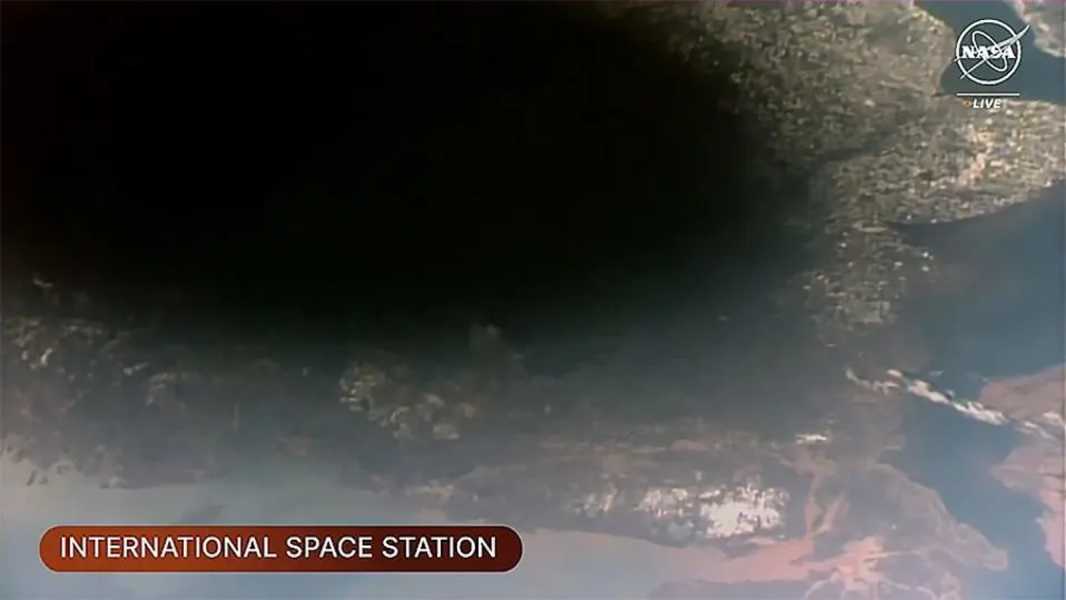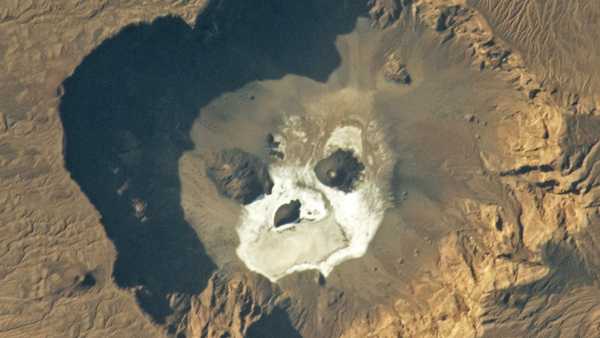
The Moon's shadow moved quickly across North America at over 1,500 mph during the total solar eclipse. (This video has been sped up considerably. In real time, it lasted about 4 hours.) (Image credit: NOAA/CIRA/RAMMSB)
These stunning satellite images show the moon's shadow streaking across North America at more than 1,500 mph (2,400 km/h) during the historic 2024 total solar eclipse, which saw several unique events briefly turning day to night.
On April 8 last year, tens of millions of people in the United States, Canada, and Mexico looked up to see the moon temporarily obscure our sun. During totality — the period when the sun is completely hidden — the moment lasted up to 4 minutes and 28 seconds, depending on the observer’s location. It was the first total solar eclipse visible from the continent since 2017, and the longest eclipse phase in 54 years.
From space, the darkest part of the moon's shadow, or umbra, could be seen slowly moving across the continent from western Mexico to eastern Canada over about 4 hours, allowing satellites and astronauts to capture some stunning images of the event.
NOAA's Geostationary Operational Environmental Satellite 16 (GOES-16) was one such orbiter. The spacecraft is in geostationary orbit, meaning it orbits the Earth at the same speed as our planet rotates, allowing it to lock onto one part of the Earth. From about 22,300 miles (36,000 kilometers) above North America, the satellite took thousands of images that were then stitched together into the digital video seen above.

Astronauts on the International Space Station (ISS) captured a shadow stretching from New York state to Newfoundland, Canada.
Images from other spacecraft have also provided alternative perspectives on the moving shadow.
NASA's Deep Space Climate Observatory (DSCOVR) captured video of the shadow moving across the planet from about 1 million miles (1.6 million kilometers) away. Astronauts aboard the ISS also captured close-up photographs of the shadow from about 260 miles (418 kilometers) above our planet's surface.
A unique event
During a total solar eclipse, various unusual phenomena can occur, and 2024 is no exception.
Many observers noticed pink or red glows around the closed disk of the Sun. Some mistakenly assumed that these were solar flares erupting from the Sun. Later, experts found out that these were solar prominences – plasma jets rising above the Sun, but not ejected outward.
On the same day as the eclipse, astronomers also spotted a tiny comet, Sungrazer, hurtling toward the Sun. The newly discovered object was captured during totality before being obscured by our star just a few hours later.
Sourse: www.livescience.com





